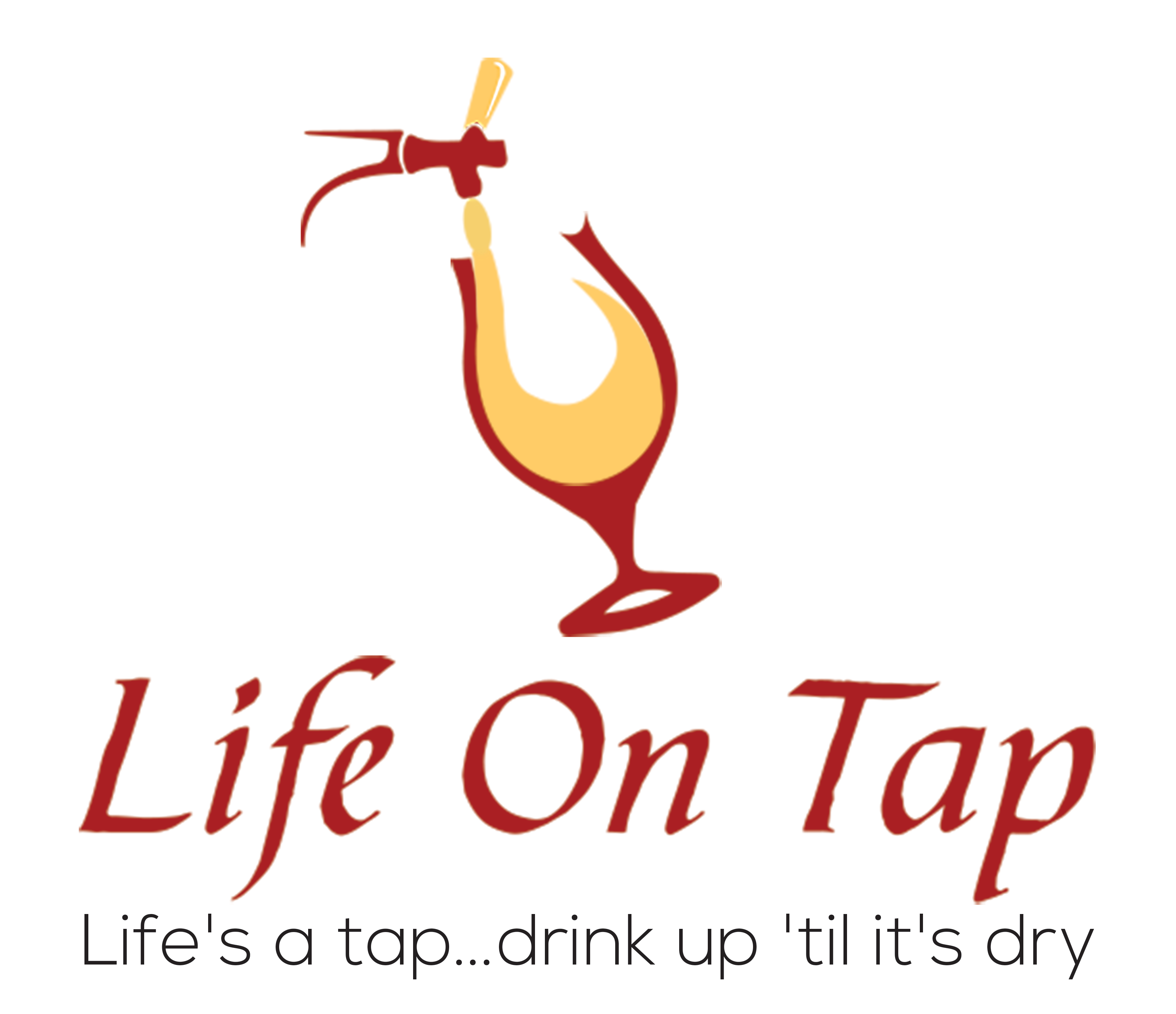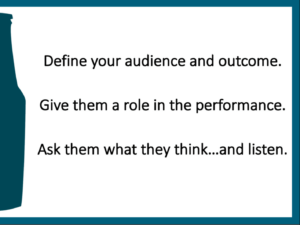Beers with Friends:
Connecting with Audiences at the Smithsonian’s Museum of Natural History
Susan Evans McClure ( @SusnEvans ) supervises food history as Director, Programs and Audience Development for the National Museum of American History. Her career prior to the Smithsonian included a 4-year tenure with Magic Hat, during which she constantly learned and connected with their audience, be it beer fans, concert-goers, or the diverse Vermont and New England consumers. She noted many things she learned there changed what she does now. Did I happen to mention she was on their packaging? Please note that she does not like Grateful Dead…too bad.
Moving onto her role at the Smithsonian, she now has the daunting task of connecting audiences with history. During college, we always joked that history was the major with a whole lot of past but no future. For a select and passionate few, this clearly is not the case. Though the Smithsonian launched in 1964, the history museum began in 1980. Since then it has evolved into 19 museums and 9 research centers and brings in 4.5 million visitors every year!
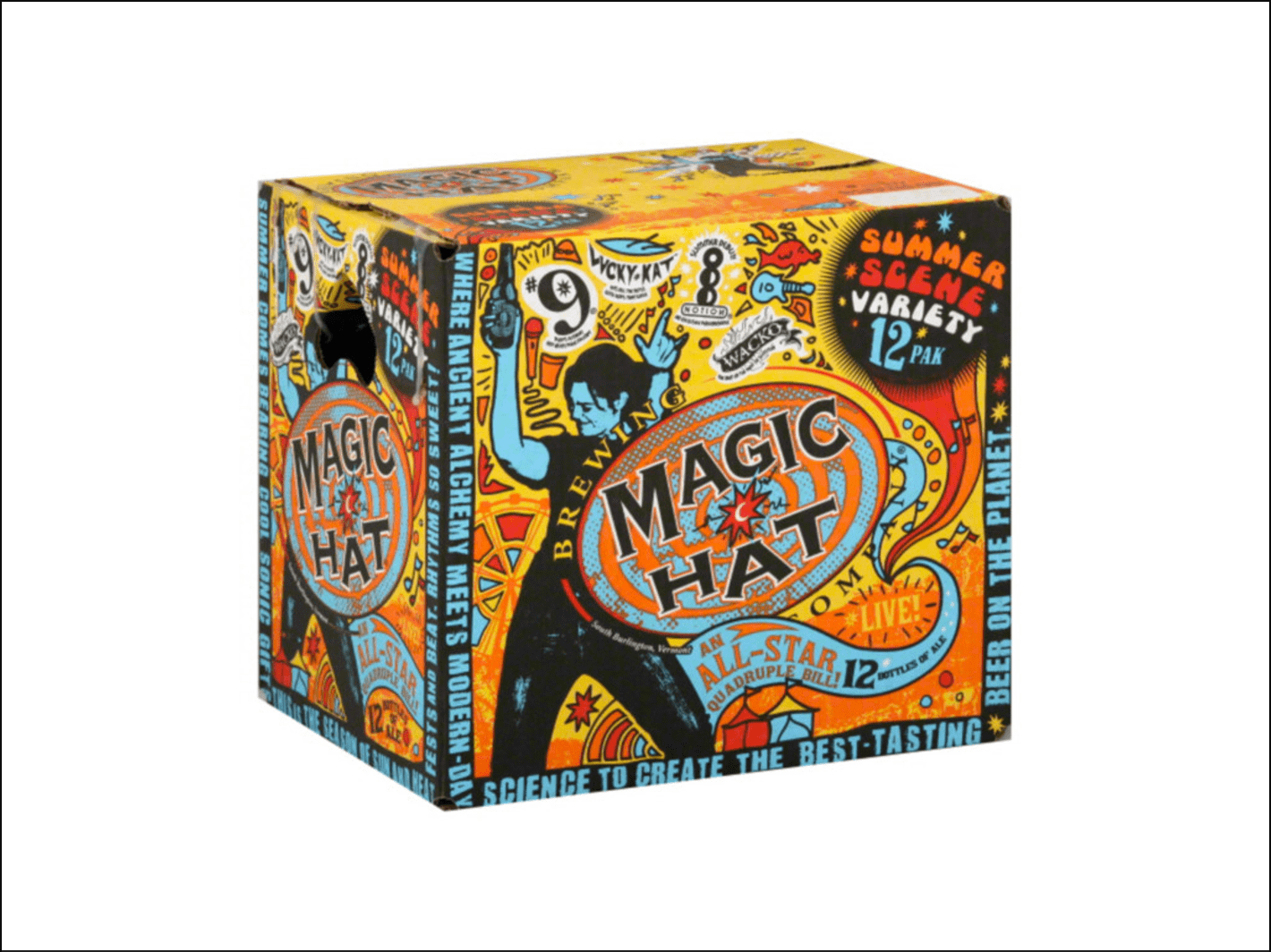
Food and The Smithsonian
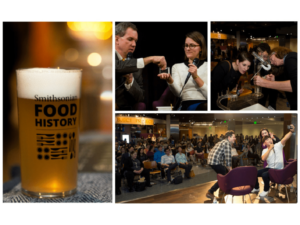
Food is obviously a big deal since we all need it to survive, but America’s food cultural history is something that needed to be documented much more in depth due to its amalgamation of various other countries’ protocultures. The exhibition Food: Transforming The American Table and Smithsonian Food History Weekend were instrumental in connecting passionate foodies with food demos, featured speakers, tastings, and most importantly the history and artifacts of their most delectable interest. I would have loved to take advantage of the “After Hours” series, featuring learning/tasting from chocolate to cocktails to tailgating. Susan announced that the exhibit will soon extend all the way to 2015 to encapsulate new additions to our illustrious food history. They also have a pretty amazing sense of humor, as they do have a study on chicken agriculture called “What The Cluck?”
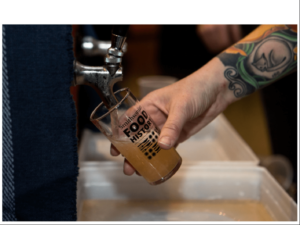
Why beer? Beer and food is simply a natural progression, as there is a lot of overlap between history and beer geeks. Believe it or not, the Smithsonian has over 3 million food and beverage-related objects there! While much of the Smithsonian’s vast catalogue is agriculture-heavy, technology (like appliances) also makes a substantial percentage along with plenty of advertising/packaging. They even have Julia Child’s kitchen there — mind you not just a few pieces but the whole kit(che)n kaboodle (pun intended).
“Start with food, and it opens up new worlds.”
Before holding their events, the museum staff surveyed the collection for beer-related pieces and located a great assortment from the early 20th Century, a few of which I have included care of Susan’s deck. They later had a sold-out panel discussion (with over 275 attendees!) featuring a brewer and a historian alongside examples from their collection. Who says we beer geeks don’t like history?
Lots of paraphernalia! – they are all online on the website! A few examples:
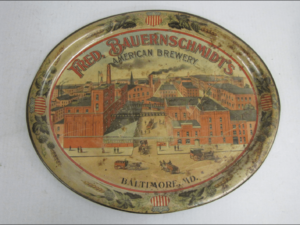
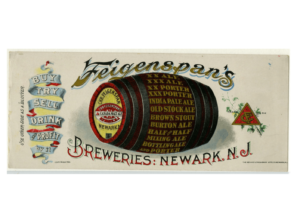
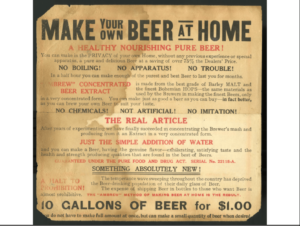
Smithsonian Tidbits
So how is The Smithsonian funded? About 60-70% comes from Federal funds with the remainder coming from charitable and private donations. One other fact I did not know was that people can use them for research purposes. While I do not believe I would have needed that level of access all those years ago in college, it could have definitely helped settle various beer-fueled conversations and arguments with regards to American brewing history. Believe it or not, they had next to nothing about the modern craft beer movement or even post-prohibition; they actually had more on wine!
Their “Kitchen Cabinet” aka The Smithsonian’s food advisory group really helped them to start stepping up their game. Kim Jordan of New Belgium put them in touch with the Brewers Association, and they launched a new project in May 2016…hiring a beer historian. When the release hit the newswire, there was an unprecedented amount of coverage, and I too (as I previously mentioned pre-BBC17) had even thought for a brief moment about applying for the job. Ultimately Theresa McCulla was hired, dual-wielding a culinary degree and a Harvard PhD; what I appreciated most about this decision is that she is a historian first and foremost. While an intelligent beer geek may have learned the ropes, I feel that academic discipline married with an attention to all things food science is the best approach.
Moving Forward
Theresa is on a huge mission of collecting items, looking to document: “put [artifacts and stories] in the record forever.” She is currently taking a brief break to enjoy her recent maternity, but she is already revving up to get back out there. The oral histories previously documented are currently being processed, with the brewing, agricultural and consumption sides all accounted for. Laboratory events will next take research to a national level, and results will be shared via normal communications channels as well on social media.
How does The Smithsonian approach digital engagement?
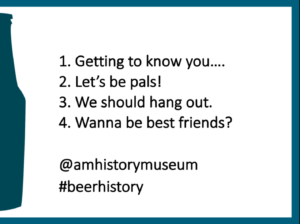
- Getting to know you – built hashtag history – went out to writers to start boosting conversations
- Let’s be pals! – created more targeted campaigns at individual interests
- We should hang out – offered more opportunities to participate – Facebook live, meetings and more events
- Wanna be best friends? – Beer history content needs to be a part of our lives…let’s work side by side
If you want to engage use @amhistorymuseum #beerhistory
Susan’s Process
- Define audience and outcome – not just millennials and history enthusiasts – What’s the deal with the history of that beer? Note shifts in behavior and track them.
- Food (and beer) is performance: give your audience a role to play – getting the audience to ask questions – about beer, history, themselves, THE WORLD?
- Ask them what they think and respect their answers. – Test, test, test. You are not your audience!
Audience Questions/Comments
- What can we do as regional bloggers to help?
It’s more like how they can help us? Smithsonian is a clearinghouse for their archives. They work more on a national level. - Craft beer is a lot of stories – how about a roadshow of modern items?
They thought about that with their traveling exhibition service and documentation and research phase is underway. A key thought is how to display…audience agreed bringing them to breweries (space permitting) would be great, and we could hear additional oral histories while on premises. - How does a city decide what to preserve?
You can’t save everything…don’t be a hoarder. Find objects that tell multiple stories. Buildings are important as well! - How about a newspaper digital collection?
This is a slow, manual process and rapid digitization projects are tough. She was not 100% sure about local and regional newspapers, but the more they are requested, the priority might get bumped up. - Jim from Pabst mentioned guests love that their tour is on beer history and it’s not a generic brewery tour.
A major thanks to Susan Evans McClure for coming out to share her personal experiences, professional approaches, and all that the Smithsonian has to offer the greater American beer (and food) cultures. I hope to research and engage more with beer history over time, especially with regards to my area and everywhere the Conference takes us next.
Cheers and remember:
Life’s a tap…drink up ’til it’s dry.
